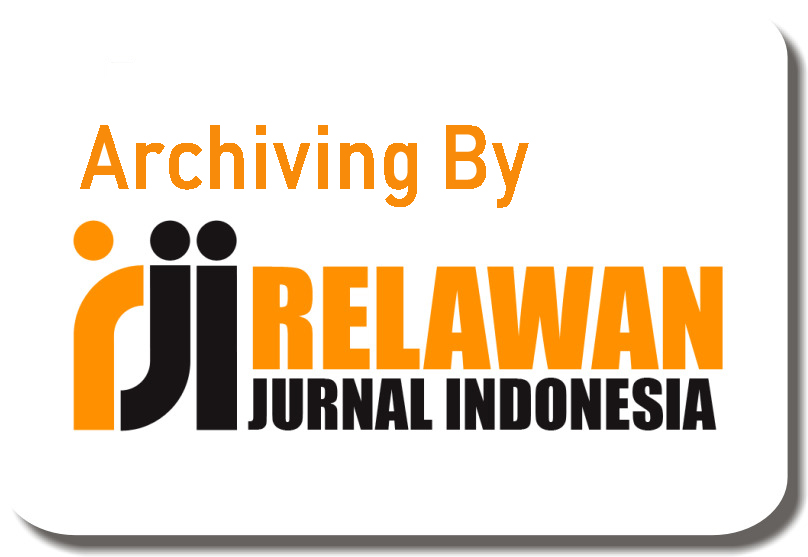Influence Active Mathematics to Ability Getting to Know the Concept Measurement Child Age 5-6 Year in Tk Three Human Gems New York
Abstract
Learning draft measurement in park children Still tend passive, so that not enough support children's understanding optimally. This study aims to determine the effect of the Active Mathematics model on the ability to recognize measurement concepts in children aged 5-6 years at Tri Insani Permata Kindergarten. The study used a quantitative approach with a pretest and posttest experimental design. The sample consisted of 15 children who were given treatment through the Active Mathematics model. Data analysis was carried out statistically to measure the effectiveness of the treatment. An increase was obtained significant on the average score of measurement recognition ability, from 13.27% (Starting to Develop category) to 78.96% (Very Well Developing category). The Active Mathematics Model has been proven to have a significant effect on increasing the ability to recognize measurement concepts, with a contribution of 64.06% which is included in the moderate category.
Keywords
Full Text:
PDFReferences
Abdullah, K. (2021). Quantitative research methodology (July 2022 edition). Aceh: Yayasan Penerbit Muhammad Zaini. ISBN 978 623 5722 91 7.
Fatdianti, R., & Rianto, E. (2016). The effect of the project method on the ability to recognize the concept of size of group B children. Journal of Educational Technology Students, 5(1), 1–6.
Paradise, I., & Susanti, RA (2024). Increasing Literacy Numeracy Through Media Dakon On Child Age 5-6 Year. Journal Child Holistic Early Age Integrative (AUDHI), 7(1), 44–
https://doi.org/10.36722/jaudhi.v7i1.3025
Handayani, S., Sumarno, S., & Haryati, Y. (2017). Efforts to Improve Cognitive Ability in Introducing the Concept of Measurement to Early Childhood Through Role Play Methods. Journal of Mathematics Education Works, 4(1).
Kurnia, R., Firdausia, S., & Novianti, R. (2020). The Relationship between Self Esteem and Self Adjustment in Children Aged 4-5 Years. Aulad : Journal on Early Childhood, 3(2), 95–102. https://doi.org/10.31004/aulad.v3i2.68
Musrikah, M. (2017). Teaching mathematics to early childhood. Martabat, 1(1), 153-174 Paramita, R. W. D., Rizal, N., & Sulistyan, R. B. (2021). Method study quantitative.
Lumajang: Widya Gamma Press (APPT), Edition, 3..
Reys, L.L. (2017). Helping children learn mathematics. Australia: Second edition Published. Rahmawati, R., & Mayar, F. (2023). Multimedia Interactive For Increase Ability
Early Childhood Measurement. Obsession Journal: Journal of Early Childhood Education, 7(4), 4673-4681.
Salwa, Siti. 2022. Introduction to the Concept of Measurement in Children Aged 4-5 Years Using Stacking Donut Media. Al Athfal : Journal of Child Development Studies and Educational Management Age Early 5 (2): 43–54. https://doi.org/10.52484/al_athfal.v5i2.357.
Seefeldt, C., Galper, A., & Stevenson-Garcia, J. (2011). Active experiences for active children: Mathematics. Pearson Higher Ed.
Shiddiq, KH, Palupi, W., & Dewi, NK (2021). Measurement Ability Profile For Children Aged 4-6 Years. Early Childhood Education and Development Journal, 31.
Solfiah, Y., Anggraini, RT, & Hukmi, H. (2020). Analysis of Statistical Abilities of Children Aged 4- 5 Years in Pks Housing Pt. Bplp Enok District Indragiri Hilir Regency. Review Journal Education And Teaching (JRPP), 3(2), 375-383.
Solfiah, Y. (2018). Kindergarten Teacher's Ability In Teaching Mathematics In Kindergarten Pembina Of Pekanbaru City. KINDERGARTEN: Journal of Islamic Early Childhood Education.
Ulfah, AK, Razali, R., Rahman, H., Ghofur, A., Bukhory, U., Wahyuningrum, SR, ... & Muqoddam, F. (2022). Various Research Data Analysis (Literature, Research and Development). IAIN Madura Press.
Juliana, S. (2014). Improvement ability measurement through problem solving on children of group B2 of ABA 3 Kindergarten, Imogiri Bantul [Thesis, Yogyakarta State University].
DOI: https://doi.org/10.31004/jele.v10i4.1103
Refbacks
- There are currently no refbacks.
Copyright (c) 2025 Qeysha Alea Febriani, Yeni Solfiah, Rita Kurnia

This work is licensed under a Creative Commons Attribution-ShareAlike 4.0 International License.



